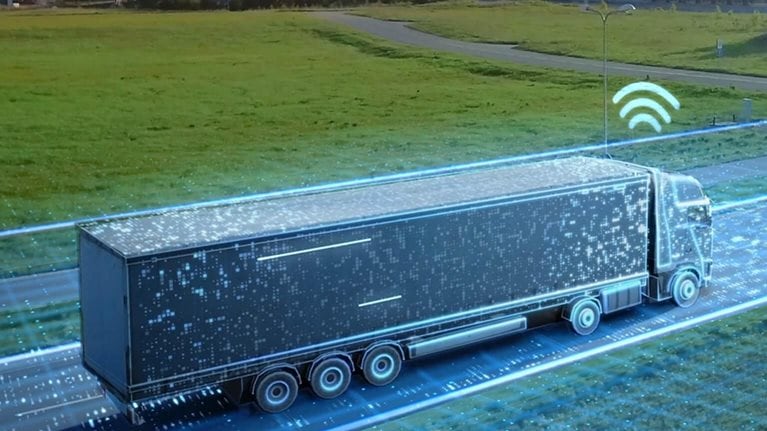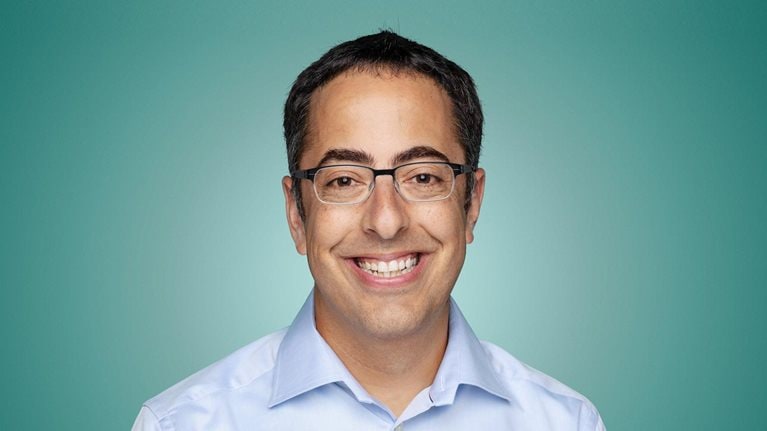In 2014, Jan Bednar founded ShipMonk. As a third-party logistics (3PL) provider, the company served the growing cadre of small and midsize businesses (SMBs) getting involved in direct-to-consumer e-commerce. It scaled quickly, graduating to larger warehouse facilities and expanding internationally, all while maintaining profitability. In late 2020 and early 2021, ShipMonk secured $355 million in growth equity funding. It now has more than 2,000 employees.
“I kind of fell into logistics,” says Bednar. “It was by accident, not by choice.” Bednar started his first company while in college at Florida Atlantic University. He’d buy in-demand American products that weren’t available overseas, store them in his apartment, and then ship them at a profit to customers all over the world. “So I got my feet wet in logistics and in e-commerce,” he explains. “And then I tried to understand that space more.”
In this installment of Logistics Disruptors, Bednar speaks with McKinsey senior partner Danielle Bozarth about the power of accurate forecasting, the importance of vertical integration, and how just a few employees can make the difference between a company’s success and its failure. The following is an edited transcript of their conversation.
McKinsey: What differentiates ShipMonk from other fulfillment companies out there?
Jan Bednar: One of the biggest differences is our vertical integration. We’re big believers in operating our own fulfillment centers. There are a lot of fulfillment providers that just provide the software layer. But it’s a hard industry to run without having control over the most crucial part of it, which is operations. We believe that the only way you can actually provide great service is through owning the operations piece.
We’re also profitable, which a lot of our competitors are not. I think that’s never been a problem for them until about the past three months, when our prospective clients have started to ask, “What is your financial health?” during the selection process. They’re worried. We’ve seen companies in our space that have run out of cash and gone out of business. You really don’t want to choose that provider. For us, being profitable since the beginning and having very good financial health have always been big priorities, and I think it’s now becoming a differentiator.
McKinsey: Technology has shaped the backbone of your company. What have you done with it that you feel is different from others?
Jan Bednar: Historically, the world of fulfillment has been designed around warehouse management systems [WMS] that are universal tools any warehouse can use, whether they’re selling furniture or small jewelry. It’s a very standard product that is configurable to be used by a lot of companies. But when we came into the market, in 2014, we did a lot of research around what the right tool would be for us. And what I realized was that none of them were a good fit for what we needed—especially around e-commerce. We started by serving small businesses, and there was really no WMS that could service them appropriately.
So we started building. We didn’t have a lot of experience, and we probably would’ve done a lot of things differently today, knowing what we know now. But it allowed us to start from scratch and ask what the ideal system would be—not just for us, but one that would deliver the best experience for the customer.
A lot of our competitors use off-the-shelf WMSs, which are not designed to service hundreds of customers in one building. So we’ve built ours to operate within that model and service our typical customer profile at scale. It allows us to be a lot more flexible and provide more visibility and control. ShipMonk clients log in and can instantly see everything that’s happening inside the warehouse and around inventory management.
For instance, with our system, customers can manage order flow after orders are submitted to the warehouse. They can make changes to the order at any point. They see who’s picking it, when they’re picking it, and which path it’s going through. If it’s delayed, we’ll give an immediate notification and say why it’s delayed. If there’s an inventory issue, we’ll give notification. That level of transparency at a large scale is a huge value add for our customers.
McKinsey: Do you then allow those customers to easily provide that information to their customers? And how do you do that?
Jan Bednar: One of our big beliefs in terms of customer management is proactivity. A lot of customer support is reactive: I ship you a package; you don’t get it; you send me an upset email and say, “I never got my package, what’s going on?” We try to flip that script.
We use data science to monitor patterns so we can notice if it’s taking six days to send a package when normally it takes four days. We’ll give our customer that information so they can send an email to their customer and say, “We’re monitoring it. If it doesn’t get delivered in the next two days, we’ll ship you a new one.”
It’s a great customer experience because you’re managing that in advance. It also prevents a lot of frustration from the end consumer, who otherwise just gets mad at the brand. They don’t think about the fact that maybe it’s the mail carrier that lost the package—for them, it’s the brand that’s delivering that experience.
We’ve also built a lot of forecasting tools that we give to brands, allowing them to manage their businesses better. It helps them to know when they should reorder inventory and to understand how many of each unit they’re selling and through which channels. A lot of these brands, especially in the SMB market, are not as sophisticated at forecasting. We realized early on that we couldn’t rely on their forecasts. So we built tools that will do that for them.
McKinsey: Transparency is the number-one complaint that consumers have about e-commerce. They don’t know when a package is coming, and they don’t know if it got delayed. We find that one of the most valuable things you can do is to create transparency for them—and for their customers through the postpurchase and fulfillment processes. What have you done that helps small and medium-size e-commerce players scale?
Jan Bednar: We started in that category not by choice but by necessity. When we were a start-up, nobody larger wanted to work with us. It’s a challenging market to work in because there are a lot of entrepreneur-driven organizations that are not typically very sophisticated when it comes to operations or supply chain expertise. But I think we’ve turned that to our advantage. We’ll hold their hand and explain things to them as a trusted partner.
Our goal is to allow them to focus more on their core businesses, not on operations and supply chain. Especially when it’s a very lean, one-, two-, or three-person company, it’s not going to have a massive team of people with a ton of experience. So we’ll typically do a lot more guiding and offer a lot of blog articles and educational videos around best practices. With a smaller company, this allows us to build a relationship early on and then ultimately help them scale without needing to worry if ShipMonk can scale with them.
I don’t think we’ve ever had a client say, “We’re growing too quickly; ShipMonk can’t support us as we grow.” We’ve supported these brands as they go from $500,000 in annual revenue to a couple hundred million. And the beauty is that they need different things during different phases of their businesses. Evolving with them and providing them with data and explanations about how they can adapt is something they find really valuable.
McKinsey: One of the things you’ve talked about is your ability to help them forecast demand. I think this holiday season will be as hard as any in terms of forecasting demand. How are you preparing for that? How are you preparing customers for that?
Jan Bednar: Overall, the last two years have been extremely challenging from a forecasting perspective. Ever since the COVID-19 pandemic started, forecasting has become even more challenging. I don’t think anybody gets it exactly right.
For us, forecasting is not just about buying inventory but also about planning labor, hiring in advance, and making sure that our infrastructure is ready for what’s coming. That’s been very challenging. But our accuracy has gotten much better. Over the last nine months, we’ve been almost within a 10 percent variance every single month on forecasts, in aggregate. And that allows us to prepare so much better for peak moments.
McKinsey: How have supply chain disruptions affected your organization? I’m sure, on the sourcing side, it’s been particularly hard. What are you doing to respond to those challenges?
Jan Bednar: For customers, it’s taken a lot longer to get inventory from the manufacturing side, so it’s become more difficult for them to manage cash flows. When they run out of inventory and don’t have steady sales, it becomes challenging for us because we have to balance the labor side. When a large inventory shipment comes in, it spikes the amount of fulfillment volume because customers are sitting on back orders, and that creates challenges in the need for labor. It becomes a lot more volatile in terms of managing the day-to-day operations.
Especially during 2020 and 2021, the small parcel-carriers’ networks were overwhelmed. Our carriers would give us literally one day of notice when they were running out of capacity. It was a really crazy situation for us. Based on this experience, we built what we call a Virtual Carrier Network. We monitor the capacity of every single carrier within our network, and if one of them hits capacity, we automatically reshop and move to a different carrier. That’s been a huge benefit to our customers.
McKinsey: Let’s talk about market differences. In your mind, how does the global market vary from the domestic market?
Jan Bednar: We’re getting our feet wet in international markets. We’ve successfully expanded to Mexico and Canada. We’re opening any day now in the UK and eventually in mainland Europe. It’s always been a dream of mine to have international locations, so finally seeing it up and running has been rewarding.
Canada and Mexico markets have been fairly similar to the US market. Our approach to operating is that we’re trying to make everything as standardized as we possibly can. We try to have a copy-and-paste model that we use in international locations. Obviously, there are cultural differences, different laws, different taxes, different regulations. But at its core, we want the ShipMonk service to be exactly the same for customers everywhere.

Logistics Disruptors
Meet the companies shaping how goods will move tomorrow.
One thing I think a lot of our competitors—especially the multinational ones—are not doing a great job with is when a brand wants to work with a large 3PL in Europe and also in the US. The brand will typically end up working with two separate teams, two different sets of software, two totally separate points of contact. We’ve changed that, creating a uniform experience no matter where in the world you are.
McKinsey: What are your growth aspirations for the next five years? What are you trying to accomplish?
Jan Bednar: We have very high growth aspirations. The macrotrends of the current economy are playing against us a bit, but I think we’re very fortunate to be able to offset that by bringing on a lot of new customers. We continue to have really strong growth year over year. We’re looking at three key areas of growth.
One is that we’re moving up market a bit. We realized that our solution was being sought by larger enterprises. If you’d asked me two years ago, I would have said we wouldn’t be moving into enterprise. But the more I learn about the challenges these larger companies have, the more I realize there is a massive differentiation through software and execution that could allow us to achieve a pretty large market share in that space. So we’re really digging into the enterprise layer.
The second piece is acquisitions. We’ve completed one fairly large acquisition and one small one this year. We’re continuing to look at other acquisitions. It might become more affordable to take on acquisitions in the next one to two years, given the environment, so I think that’s another area of opportunity.
Third is continuing to grow globally, adding more international locations. That’s not solely allowing our US customers to expand globally but also trying to gain customers in local markets where it makes sense.
McKinsey: What do you see as the biggest obstacles you’re going to have to overcome to get to that vision?
Jan Bednar: I think it’s the ability to scale the team. People are the biggest driver of growth and of success or failure. Every time we grow, we have to retool and reinvent ourselves as a company, and we need to make sure that the people we bring in have that mindset of growth—they want to learn, want to be curious, and are passionate about the business.
If I look at our journey over the last seven years, there have been a lot of moments where we were very close to just breaking apart. And it’s always the people that hold it together. Having the right people for that journey is the most important part of success.
McKinsey: What’s been your most surprising lesson as a CEO?
Jan Bednar: I think one of the most surprising lessons is how few people it takes to make a massive impact on the success of a company. I look back and think I’ve gotten so lucky with bringing in some of the most amazing people. Without them, this would never work.
Sometimes one person could be the difference in whether the company succeeds or doesn’t. Everybody always talks about talent and how important it is. But I truly realize that if I didn’t have some of these people on the team, we would’ve never been able to make it to where we are.
McKinsey: If you had a magic wand, how would you change the logistics industry?
Jan Bednar: I think the number-one thing is somehow trying to get more young people excited about logistics. I don’t have the statistics, but I don’t think logistics is most people’s first choice as a career. I think the way any industry can grow a lot faster is if you attract brilliant people, and I think many people who are brilliant don’t think of logistics.
The other thing, which is related, is fostering more appreciation for what logistics does for the world. People don’t always appreciate what we do when we work hard for them, and then when something bad happens, it’s the end of the world. You rarely thank the delivery company for delivering your packages on time every day, but the time that they don’t, you get pretty upset. I don’t whine about it, because that’s the world I picked. But I wish people had more appreciation for what we do.


